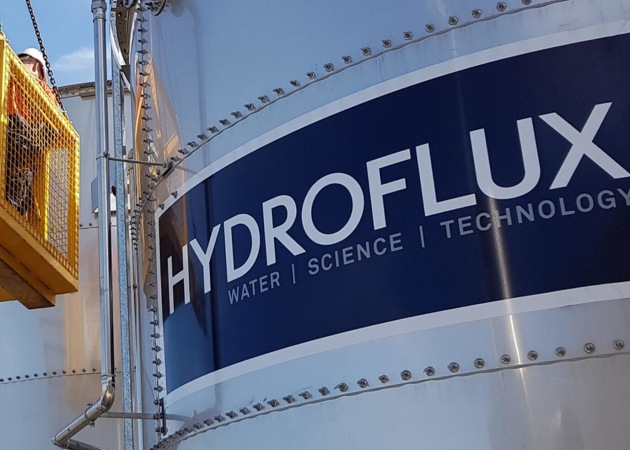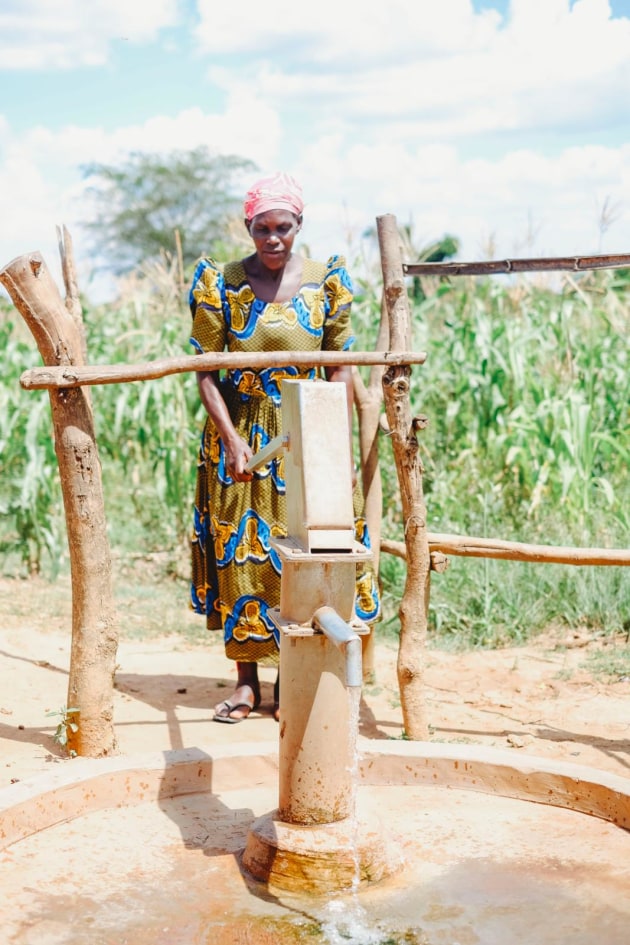Global water and wastewater treatment technology solutions company Hydroflux recently achieved carbon neutral certification. CEO of Hydroflux subsidiary Cress Consulting Julia Seddon, and members of the company’s executive, talk to Kim Berry about the process and benefits of striving for zero.
It was 18 months ago that industrial water management company Hydroflux decided to “get its house in order” when it came to its own environmental credentials and carbon footprint.
The company employs more than 100 people across several business units, providing water and wastewater management equipment, products, and services. Environmental and sustainability services firm Cress Consulting is also part
of the group.
Cress CEO and director Julia Seddon recounts that it was an internal sustainability analysis that set Hydroflux on its carbon neutral journey.
“The analysis pointed to a number of big opportunities with reducing carbon emissions at the top. Becoming carbon neutral involves understanding your emissions, reducing them, and looking to offset what’s left. Then it is a process of each year just getting better and better at those steps. Carbon neutral certification requires annual review and updates to make sure what the company is reporting is accurate,” she says.

Hydroflux CEO Adrian Minshull says the certification is the first step for the company in “doing everything possible” to reduce its impact on the environment.
Hydroflux director Andrew Miley adds that sustainability is a major plank of its business model.
“We see the business as having a role in raising awareness around the value and the preciousness of water as well as carbon neutrality,” Miley says.
Being Climate Active
The Australian government backed body, Climate Active, is the vehicle that drives voluntary climate action to measure, reduce, and offset carbon emissions in the business community. Its Climate Active Carbon Neutral Standard is regarded as one of the most rigorous certification programs in the world.
“The standard is robust, well recognised, and respected,” says Seddon.
The standard was formerly the National Carbon Offset Standard, which had been in place since 2010. Climate Active came into being in 2019. On average, it takes a company six to 12 months to achieve certification.
Minshull says, “Climate Active certification is aligned with our values, business objectives and future direction, and connects our activities in the sustainable water and energy arena with our carbon emission reduction goals and our mission to protect our most valuable resources.”
But the process is not without its challenges.
Seddon says, “It’s a reasonably new thing to become carbon neutral, but in a lot of ways it is still done the old school way, at least initially.
“It is a technical process, not straightforward or particularly intuitive, with a lot of manual work that is tedious in terms of gathering and presenting data. There is room for some sort of digital improvement for data to be seen through a climate or a carbon lens.” That said, Seddon stresses there are many consultants that can assist companies with the process and not necessarily at a huge cost.
“The role of consultants is changing. At Cress we see our job as going into a business, understanding it as best we can, and then working alongside the teams to build internal sustainability capacity. Sometimes that is with the CEO, sometimes it is the technical or quality manager, or another internal team.
“Gone are the days of a consultant coming in and doing the project for you, and then coming back year after year. The capability has to be embedded in the business and done by the business. You might still need some assistance from time to time, but it is now much more about working alongside the company,” she says.
Seddon explains that once a company has initially compiled the information for the carbon emissions inventory, the process becomes much easier. The idea of industry templates, like the one developed by Capital Brewing Co. for craft breweries [see the Food & Drink Business website for story], is an idea Seddon supports in encouraging more companies to aim for carbon neutrality.
“If you’ve brought in a consultant there’s obviously consulting fees and there are certification fees that you pay to Climate Active. But you are likely to recoup that cost in savings you make from completing the process. It could be reduced energy costs because it forces you to look at how much energy you use, realising the cost of the waste you’re sending to landfill, or ways of becoming more efficient or streamlining transport,” she explains.
Miley adds, “When you’re looking at a wastewater project, for example, if you consider it end to end, you spend probably $5 per kilolitre or more purchasing clean water, heating, cooling, or running it from here to there. Then you spend another $5 per kilolitre treating it and discharging it. Itall adds up.”
The scope for change
At Hydroflux, the process began with calculating emissions and compiling a comprehensive emissions inventory. Then the company set about looking at ways to reduce them.
“Some of the steps are straightforward, dealing with Scope 1 emissions by transitioning to electric vehicles, for example. Or addressing Scope 2 emissions by shifting to a renewable electricity supply and other energy saving measures like changing the type of lighting in the offices,” Seddon explains.
Hydroflux already had a green travel policy in place, which meant all employees are provided with free public transport to and from work. It was updated to mandate that any air travel for work must be offset at point of purchase.
Reducing Scope 3 emissions is one of the biggest challenges for companies because of its scale and complexity.
“The National Greenhouse and Energy Report covers just Scope 1 and 2. So for industry, that is generally natural gas, refrigeration, and electricity. Scope 3 is essentially everything else. Think of it in terms of all the good and services your company purchases – it’s the stationery, legal services, IT equipment, advertising and
all your suppliers. It is generally the biggest source of emissions for a company.
“From a Cress perspective, for many of our clients – and Hydroflux was no different –
the bulk of their emissions are Scope 3, which is all about supply chain,” she says.
During its analysis, Hydroflux found that the main area in which it would have to reduce emissions was its supply chain.
Hydroflux director John Koumoukelis says, “We are now asking our suppliers questions around carbon emissions and what they are doing to address those.”

It is no different for the food and beverage sector, with Seddon calling on the industry to push itself to the stage of looking at the supply chain collectively and working out what can be done to reduce emissions.
“If you’re in food and beverage buying fruit concentrate from 10 different countries, you drill down to a supplier level. It might come down to an individual farmer with a family to support. You really need to go to that level and understand what will make the difference for this supplier to, a) stay in business and b) become more sustainable.
“Sometimes it is something quite simple, like the length or type of contract or the contractual arrangements. Everyone needs some sort of certainty, a farmer needs to know that if they plant this crop, that company is actually going to buy it and then buy it again next year.
“Big companies understand their supply chain in depth and many have done a lot of work around the sustainability of their entire value chain.
“And that is what everyone needs to do because our inputs are somebody else’s outputs, and our outputs are somebody else’s inputs. Everyone needs to be playing their part,” Seddon says.
It also takes in waste and as Seddon says, achieving zero waste to landfill is very difficult.
Hydroflux looked at each of its locations and then worked out what the realistic options were for recycling and diversion.
“Some offices are based in areas where this is no council collection of recyclables, so it came down to individual volunteers to take the recycling home. We went to that level even to the extent of collecting soft plastics for recycling.
“We’ve got better systems for that now and all that is left is finding a solution for contaminated waste and organics, that is one of our targets,” Seddon says.
Offset goals
Once the company reduced or eliminated what it could, it turned its attention to the best way it could offset remaining emissions.
Hydroflux has a charity partner in Northern Uganda that drills wells for drinking water as part of a program called Cents for Seeds. It is a microfinancing campaign to support women in the community to turn their work into an enterprise for a more secure income.
“What they discovered was a lack of potable water, which was inhibiting further success. So Hydroflux now funds the construction of 12 drinking water wells a year,” Seddon says.
The company, keen to find carbon credits that related and expanded on that project, found an opportunity to buy carbon offsets in the community by providing fuel efficient cook stoves.
“The credits are generated by switching out the fuel being used, reducing the number of trees being cut down and the amount of fuel needed. Hydroflux then claims the difference in carbon emissions to offset its own,” she explains.
Social licence, business benefits
There is another aspect to shifting to carbon neutral practices which is to set the tone for a company’s culture and, more broadly, normalise decarbonising behaviour.
“It can help empower the decisions of others and has a trickle-down effect on employees, suppliers, and customers, giving them a gentle nudge in the right direction,” Seddon says.
Koumoukelis adds, “Some of our suppliers have asked for assistance and guidance on what they should do and while they may not go out and gain their own certification, they certainly have engaged with this in terms of what it is that we have done that they can apply to their business. It's a chain reaction.”
It can also be a strategic business benefit along with the intangible benefit of social licence. For example, businesses with net zero targets are more likely to purchase equipment, systems or services from a carbon neutral company because it is a zero gain against their inventory score.
This is where the strategic business benefits can truly come into play. One of the easiest ways to try to wrangle Stage 3 emissions down is to look for suppliers on the same pathway.
Seddon says Cress is seeing the flow-on effect of other companies, like those in the construction and infrastructure industries, setting more ambitious targets to reduce emissions not just offset them.
“We are working with suppliers to those industries to help them achieve their own carbon neutral certification, so they are a more attractive option than their competitors when it comes to winning contracts.

“We have worked with clients this year that have told us they didn’t win a tender even though they were cost competitive because they didn’t have anything on climate or carbon. It can make a big difference to contractors winning jobs,” she says.
CEO Adrian Minshull adds, “There is more we can and will do as part of our commitment to reduce emissions and mitigate the impacts of climate change. The solutions we design, the plants we install, and the equipment we provide are built to last. We have been looking at how to make these long lasting assets as efficient and effective as possible, and ultimately carbon neutral, to assist our clients achieve their zero carbon goals.”
Seddon points out that ultimately, carbon neutral certification is a business decision with a rapidly growing imperative for everyone to commit to doing their bit to decarbonise, with or without offsets.
This article first appeared in the September edition of Food & Drink Business magazine.






